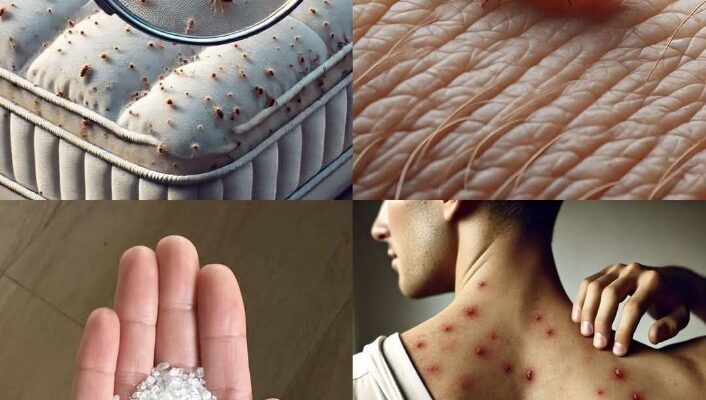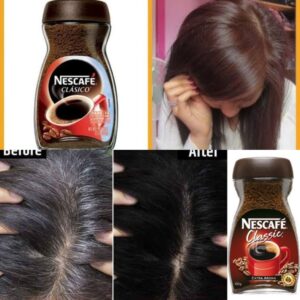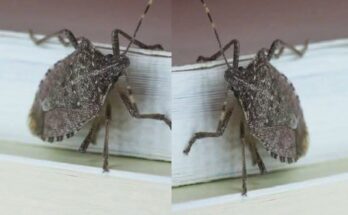Bedbugs: “Effective and Simple Methods to Completely Eradicate Bedbugs from Your Home and Prevent Their Return”
How to Get Rid of Bed Bugs: A Complete 7-Step Guide

Bed bugs are a common household pest that can wreak havoc on your sleeping habits and overall well-being. These tiny bloodsuckers can infest your bed, furniture, and even your clothing, causing itchy bites and leaving you feeling uncomfortable in your own home.
If you’ve ever experienced a bed bug infestation (or heard of one!) you know just how frustrating and difficult it can be to get rid of them.
But fear not, as there are several effective methods for eliminating bed bugs and preventing them from returning. In this article, we’ll explore some of the most practical and effective ways to get rid of bed bugs and enjoy a peaceful, bug-free sleep. 
What are Bed Bugs?
Bed bugs (cimex lectularius) are small, flat, reddish-brown insects that feed on the blood of humans and animals. They are called ‘bed bugs’ because they often live in and around the bed area, feeding on the blood of unsuspecting people while they sleep at night.
Bed bugs are nocturnal and can hide in small cracks and crevices during the day, making them difficult to detect. They do not transmit disease, but their bites can leave red, itchy welts and swelling all over your body.
Adult bed bugs are oval-shaped, are oval-shaped, reddish-brown insects that are wingless and flat. They’re small in size, around 1/4 to 3/8 inch long. After a meal, they become swollen and elongated when engorged with blood.
Bed bug eggs are white and are about 1/32 inch long. Newly hatched nymphs are the same shape as adults but are yellowish-white in color.
 Bed Bug Bite – Photo Credit: Dreamstime.
Bed Bug Bite – Photo Credit: Dreamstime.
Life Cycle of a Bed Bug
Active at night, female bed bugs lay white eggs in batches of 10 to 50 on bedding and in cracks and crevices. Under favorable conditions one adult female can lay as many as 450 eggs over her lifetime.
Baby bed bugs hatch in about 10 days and use their beak-like mouthparts to feed on hosts. It takes 1-2 months for nymphs to become mature adults.
Adult bed bugs can live a year or longer (most live about 10-11 months) and there may be three or more overlapping generations per year.
Note: While bed bugs carry human pathogens, it has not been shown that they transmit these diseases to humans or animals.
Is It Possible to Get Rid of Bed Bugs on Your Own?
It is possible to get rid of bed bugs. Getting rid of bed bugs can be a time-consuming process, so try to be patient during the process that we have fully explained below. Depending on the extent of the infestation, you may need to experiment with both chemical and nonchemical treatments.
Certain conditions can make it more challenging to get rid of bed bugs. If you have a lot of clutter or frequently travel and bring new bed bugs home in your luggage, you may find it more difficult to get rid of them.
If you are unable to get rid of them on your own, you may need to hire a professional exterminator. Follow the steps below to learn how to get rid of bed bugs.
 Photo Credit: Dreamstime.
Photo Credit: Dreamstime.
Step 1: Identify All Infested Areas
wallpaper and paneling. Then look around the floorboards and baseboards, especially if you notice any cracks there.
Inspect All Windows and Doors
It’s also important to inspect all windows and doors. To do that, check the frames and trim of the door. When it comes to windows, inspect cracks if there are any, and then check the drapes, curtains, blinds, or any other window coverings that your home might have.
Carefully Check the Electrical System
You’ll also have to check your electrical system with caution. Inspect all clocks, phones, smoke detectors, and the face plates of electrical outlets and switches. But, for your own safety, be careful not to put anything into an area with electrical wires while you’re doing this.
Take a Closer Look at Your Decor
out that guide and come back here if you are indeed dealing with bed bugs.
Situation 3: You Found Bed Bugs
The third situation is simple: you actually found bed bugs. If that’s the case, then it’s time to move on to step 3 to learn how to contain the infestation and then kill the bed bugs!
 Photo Credit: Shutterstock
Photo Credit: Shutterstock
Step 3: Contain the
your floor or under the bed.
But while doing this make sure of one thing: don’t move items from an infested room into a clean room since it has the potential of spreading the bed bugs even more.
Also, seal up any open cracks and crevices. Pay special attention to loose wallpaper that you may have to glue down, and tape up any open electrical outlets. Another important thing to do is to caulk cracks around baseboards.
The last step in prepping for your bed bug treatment is to move your bed away from the wall so that bed bugs can’t climb onto it and hide there while you’re treating the space.
Step 4: Kill the Bed
Time to start killing bed bugs! You have quite a few options, and we’ll start with the least invasive, home remedies and move on to stronger ones such as chemical insecticides. Let’s look at each of these in more detail:
1. Use Temperature
The first non-chemical treatment you should try is to use temperature as a way to get rid of bed bugs in your mattress and other key areas. High heat at 115 degrees Fahrenheit (46.1 degrees Celsius) or extreme cold at 32 degrees Fahrenheit (0 degrees Celsius) will easily kill these bugs.
To do this, wash any affected clothing and bedding in very hot water for 30 minutes. Once that’s done, put them in a dryer for another 30 minutes on the highest possible heat setting.
To use the cold method instead, you can place all infected items in a plastic bag and put them in the freezer at least 0 degrees Fahrenheit. Leave them there for around five days to make sure all the bugs are dead.
2. Try a Steamer
Another way to kill bed bugs is to use a steamer! You can easily use it on your couches, mattresses, or other places where they hide.
before using them, make sure to read the label carefully and leave the house before setting them off.
Step 5: Monitor the Bed Bug Control Process
Eliminating bed bugs can be a time-consuming process. Before you can be absolutely sure that your treatment methods have worked, you’ll need proof that they’ve actually left your property.
To do this, start by inspecting the infested areas for signs of bed bugs once every 7 days. We also recommend placing bed bug interceptors under each leg of your bed to spot any bugs that may have survived. This will trap them and not allow them to climb into your bed and reproduce. You may have to do this for a full year to be absolutely sure.
Place bedbug interceptors under each leg of the bed to make surviving bedbugs easier to spot. Bedbugs will be trapped by these gadgets before they can climb into your bed. You may need to keep checking the interceptors for a full year.
Unfortunately, bed bugs are persistent, nuisance pests that can stick around for a while before being eliminated completely. They can actually live for up to 400 days without food!
Try the different methods in this complete guide to getting rid of bed bugs to control the infestations. If all else fails, it may be time to contact a professional exterminator.
Step 6: Contact a Professional Pest Control
Company
If you still haven’t gotten the desired results after using the methods above, you may have a severe infestation that requires professionals!
Pest control companies have the advantage of having access to chemicals and other treatments that aren’t available to us. Plus, they can use these insecticides safely. Not only do these stronger insecticides kill bugs on contact but some can also stay inside furniture and cracks to kill bed bugs over time.
They also have access to equipment to safely use heat treatments for an entire room. This special equipment can heat up a room to a temperature between 135 to 145 degrees Fahrenheit (57.2 to 62.8 degrees Celsius) which is high enough to effectively kill bed bugs.
Professional treatments may cost anywhere from $300 to $5000 depending on the severity of the infestation, and they will provide you with prepping instructions before they begin their work. Treatment may take two to three visits to start working.
Sometimes, this is the only thing that can be done if all other methods aren’t working. That’s why, we recommend you learn the early signs of bed bugs to make sure you can handle the issue before it gets out of hand and to take appropriate preventative measures.
Step 7. Prevent Future Bed Bugs
When dealing with bed bugs, prevention is definitely better (and cheaper) than controlling it later!
The first step to preventing an infestation is to learn where bed bugs come from in the first place. We’ve written a complete guide that’ll help you know the three main causes and what attracts them to your home (hint: lack of sanitation is not the cause!).
The most important thing to do is to inspect your clothes, luggage, purse, and belongings when coming home after traveling domestically or internationally. Whether you stay at a five-star motel, an Airbnb, or a motel, bed bugs can be anywhere and it’s important to be cautious.
In fact, common public places like hospitals, airports, and even daycare facilities can have bed bug infestations. And, unfortunately, all it takes is for one to hitchhike in for an infestation to begin!
Vacuum your floors and mattress often, and wash all sheets and clothing in hot water regularly (at least once a week). Seal cracks around baseboards, light sockets, furniture, and electrical outlets with caulk to eliminate hiding places as much as possible.
health? What if a simple natural drink could help? A powerful blend…
Dye Your Hair Naturally Shiny Brown at Home & Cover White Hair – With Coffee! ☕🌰
If you’re looking for a chemical-free, easy way to give your hair a rich brown tint and cover white strands, look no further than your kitchen. Coffee is a natural dye that can…
like flu-related phlegm and chest congestion, the discomfort can be overwhelming. Many people immediately turn to over-the-counter medications to…
Mullein: Unlocking the Healing Power of Its Leaves, Flowers, and Roots
Mullein (Verbascum thapsus), a towering herb with soft, velvety leaves and radiant yellow flowers, has been cherished in traditional medicine for centuries. This remarkable plant provides a…






